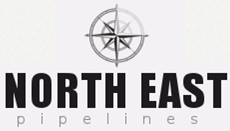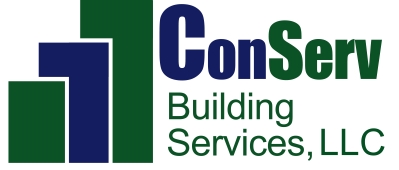Information
-
Document No.
-
Audit Title
-
Client / Site
-
Conducted on
-
Prepared by
-
Job title:
- Site Manager
- Contracts Manager
- Project Manager
- Director
- Engineer
- Safety Adviser
- Site Supervisor
-
Location
-
Site Management Team.
Site access, set up and documentation
-
Access to the site is clearly signposted with safety signage displayed
-
Boundary fencing is in place, secure and preventing unauthorised access
-
Traffic management routes are clearly identified and lay down / storage areas are in place and managed.
-
Office, welfare (inc drying room) are established in line with statutory requirements
-
Facilities are clean, tidy, suitable for the numbers on site and free from stored materials.
-
Notice boards have statutory notifications (F10, Law Poster, SIte Layout etc) and additional safety information clearly displayed.
-
Construction Phase Health and Safety Plan is developed, update and reviewed as required.
-
Fire and emergency plan is developed, available and communicated to all on site
-
Method statements and risk assessments are in place for all site activities, appraised as communicated (signed) as required.
-
First-aiders on site, identified and first-aid facilities in place. Accident book available.
-
Inductions being carried out (site and visitor) and records being kept.
-
Consultation methods in place, safety meetings being held, tool box talks completed (recorded) and open door policy communicated.
-
Weekly site inspections are being carried out, actions identified and closed out where required.
-
Statutory registers for plant, tools, scaffolding, lifting gear / equipment, excavations etc are in place and completed as required
-
Permits to work are being issued and communicated for hot works, excavations, confined spaces, lifting operations and temporary works.
-
Summary: (identify action areas and best practice being observed)
Access and Egress to site areas
-
Access routes to site areas are clearly identified and free from debris or obstructions
-
Emergency routes are identified and free from debris or obstructions.
-
Vehicular and pedestrian traffic is clearly segregated and signposted.
-
Unauthorised access areas are clearly identified by barriers and signage, segregated areas in place around high risk activities.
-
Staircase access is available for the transport of men and materials to height work where required
-
Summary: (identify action areas and best practice being observed)
Working at Height
-
Confirm work at height being carried out
Tube and fitting / System Scaffolding
-
Confirm scaffolding is in use (if not move to next section)
-
Scaffold designs are available (where applicable) and design is being followed.
-
Scaffold operations are being undertaken in line with SG4:10 guidelines, scaffsteps or other system is being used.
-
Tube and fitting scaffolds have base plates and sole boards correctly positioned.
-
Guard rails, toe boards and brick guards are in place on all elevations
-
All scaffolds are fully boarded.
-
Loading bays have proprietary gates fitted and safe working load is indicated
-
Materials are stacked below guard rail heights and platforms are free from debris and spent material.
-
Safe access and egress is available around the working platforms
-
Warning signs in place on incomplete scaffolds
-
Handover certification is issued and pull test information is available.
-
Scafftags are visible, in date and confirm weekly inspection regime
-
Summary: (identify action areas and best practice being observed)
Ladders / Stepladders
-
Confirm ladders / stepladders are in use (if not move to next section)
-
Stepladders / Ladders are in good condition and fit for use
-
Stepladders / Ladders are being used for access only, at the correct angle and secured or footed as required
-
Stepladders / Ladders being used on firm level ground only
-
Stepladders where in use are the most suitable form of access and the activity has been risk assessed.
-
Stepladders are in good condition and industrial grade
-
Stepladders are being used correctly, three point contact being observed and the top three steps are not being utilised for access
-
Summary: (identify action areas and best practice being observed)
Mobile towers / Podiums / Hop-ups
-
Confirm mobile towers, podiums and / or hop ups are in use (if not move to next section)
-
Mobile towers are erected in line with required manufacturer standards
-
All guard rails are in place and toe boards fitted (where required)
-
Outriggers are fitted to mobile towers where required
-
Mobile towers are in good condition and erected on firm level ground
-
Mobile towers have wheels locked when in use
-
Mobile towers are not being moved with operatives, tools or materials on the platform
-
All mobile towers are being erected by PASMA (or equivalent) trained competent persons
-
Podiums are being utilised where required
-
Podiums are being used correctly
-
Hop-ups are being used correctly and are in good condition
-
Summary: (identify action areas and best practice being observed)
Mobile Elevated Work Platforms
-
Confirm MEWPS are in use (if not move to next section)
-
MEWPS being operated by trained competent personnel only
-
All MEWPS have in date test and examination certification (within 6 months for lifting people)
-
Restraint being worn inside Cherry Picker platforms and attached to correct fixing point
-
No work is being carried out beyond the basket and rails are not being used for extending reach areas.
-
MEWPS not being operated near overhead cables or obstructions
-
Outriggers are in use on firm level ground and MEWPS have been levelled for use
-
Summary: (identify action areas and best practice being observed)
Safety Nets
-
Confirm safety nets are in use on site
-
Handover certification has been issued for fully erected safety nets
-
Safety nets are being erected by FASET trained competent electors
-
Safety nets are erected correctly and are free from defects
-
Rescue procedures are in place for falls into safety netting
-
Safety nets have inspection certification or tags in place to conformity
-
Safety net inspection regime is being followed
-
Summary: (identify action areas and best practice being observed)
Trestles
-
Confirm trestles are in use (if not move to next section)
-
Trestles are erected on firm level ground
-
Trestles are fully boarded with ladders access
-
Trestles are fitted with a proprietary guard rail and toe boarding system
-
Trestles are secured by manufacturer pins only and at maximum 1.2 metre centres
-
Trestles are no higher than second pin height and are safe and secure for use
-
Summary: (identify action areas and best practice being observed)
Edge Protection
-
Edges are guarded and falls prevented using suitable and sufficient barriers
-
Floor openings are protected and barrier end off
-
Excavation edges are protected with barriers and stop block (where required)
-
Lift shafts and service ducts are guarded to prevent unauthorised access.
-
Summary: (identify action areas and best practice being observed)
PPE
-
All standard PPE is being worn safety helmets, high visibility clothing and safety footwear
-
Where noisy operations are evident ear protection is being worn
-
Gloves being worn using vibrating tools
-
Gloves being worn when handling hazardous material including mortar, plaster, concrete, flooring screeds etc
-
Harnesses being worn during scaffold operations, inside cherry packers and where required by risk assessments
-
Harness inspection regime is in place
-
Respiratory protection being worn during cutting, grinding and shaping operations.
-
Summary: (identify action areas and best practice being observed)
Housekeeping
-
All access and egress routes are free from debris and spent materials
-
All cables are tidy and suspended to prevent trip hazards
-
Fuels and Flammables are stored in a lockable cage
-
Skips are available for use and not overflowing
-
Work areas are free from debris and spent materials
-
Summary: (identify action areas and best practice being observed)
Asbestos
-
Asbestos survey information is in place and asbestos locations indicated within the Construction Phase Plan
-
Asbestos plan is in place where removal works are being undertaken and HSE notification completed
-
Asbestos plan includes method statements, risk assessment, training records, waste removal procedures
-
3 stage air lock in place and decontamination units in place
-
Transit routes are segregated and free from obstruction and materials
-
Summary: (identify action areas and best practice being observed)
Refurbishment / demolition
-
Confirm refurbishment or demolition works are being carried out (if not move to next section)
-
On refurbishment project all operatives have undergone Asbestos Awareness training
-
A building survey has been undertaken and asbestos information is readily available
-
A work sequence has been produced and all supporting documentation is in place and appraised
-
Services have been identified and isolated
-
Propping details are available where required
-
Existing fixtures and fittings have been protected
-
Traffic routes for waste removal are free from obstruction, lifts are being utilised for waste removal or chutes employed
-
Signs barriers and segregation is in place to prevent unauthorised access
-
Summary: (identify action areas and best practice being observed)
Electricity
-
110volt tools only in use
-
All cables are in good condition, fully extended and suspended to reduce tripping hazards
-
Distribution units and boards have been tested and certified
-
Power tools have been tested and labelled accordingly
-
All leads and tools are stored correctly when not in use
-
All temporary supplies have been tested and certification is available for inspection
-
Summary: (identify action areas and best practice being observed)
Excavations
-
Confirm excavations are being carried out
-
Permit to Dig issued and service locations marked
-
Excavations are shored to prevent collapse
-
Excavations are guarded to prevent unauthorised access
-
All personnel are working within the shored area
-
Spoil is stacked a sufficient distance from excavation edges
-
Excavations have safe access and egress at two locations
-
A safe means of crossing excavations is in place
-
Summary: (identify action areas and best practice being observed)
Mobile Plant
-
All plant has valid test certification (within 12 months)
-
All plant is being operated by trained, competent personnel.
-
All plant is switched off and immobilised when not in use
-
All attachments are supported by correct pins or quick hitch devices
-
Roll over protection is in place where required
-
No passengers are riding on mobile plant and driver is not in position on vehicles being loaded
-
Seat belts are in place and working on mobile plant
-
Reversing aids are in place on all mobile plant
-
Banksmen are in attendance during plant movement
-
Weekly plant (minimum) inspections are being carried out and recorded.
-
Summary: (identify action areas and best practice being observed)
-
Areas for improvement
-
Areas of best practice
-
Sub-contractors of note
-
Approximate numbers on site
-
Add signature
-
Select date











